Unleashing the Power of the SON Dynamo Hub USB Charger: A Strategic Guide for Tools & Hardware Enthusiasts!
The SON Dynamo Hub USB Charger is quickly becoming a cornerstone innovation for tool users, cyclists, and DIY professionals seeking reliable, off-grid energy. Whether you’re on a remote mountain trail, in a workshop without stable electricity, or managing demanding tools outdoors, this sleek German-engineered device promises uninterrupted charging without relying on the grid. But is…
The SON Dynamo Hub USB Charger is quickly becoming a cornerstone innovation for tool users, cyclists, and DIY professionals seeking reliable, off-grid energy. Whether you’re on a remote mountain trail, in a workshop without stable electricity, or managing demanding tools outdoors, this sleek German-engineered device promises uninterrupted charging without relying on the grid.
But is it really the perfect match for your setup? That depends on how you use it—and how well you optimize it. This guide dives deep into the hows, whys, and what-nexts of the SON dynamo system. It’s more than a review: it’s a strategic teardown, performance blueprint, and real-world case analysis crafted for readers in the Tools & Hardware, Diamond Tools, and Home Hardware niches.
Why the SON Dynamo Hub USB Charger Isn’t Just for Cyclists Anymore
Originally built with long-distance bikepackers in mind, the SON Dynamo Hub USB Charger is now disrupting broader hardware and tool spaces. With portable energy demand rising across professional and DIY domains, tradespeople, off-grid builders, and mobile repair crews are integrating these hubs into their daily workflow.
Problem: Tools Need Power—Everywhere
From cordless drills to LED inspection lights and smart torque drivers, modern tools increasingly rely on USB-rechargeable batteries. Yet charging on-site—especially in remote, developing, or post-disaster areas—remains a critical bottleneck.
The common workaround? Power banks. But even high-capacity packs eventually drain. Solar panels? Great in Arizona, not so much in rainy Wales or during storm season in the Midwest.
Agitate: When Energy Bottlenecks Cost More Than Time
Missed deadlines: You can’t finish assembling a fence or cutting masonry blocks if your inspection laser or grinder battery dies halfway.
Downtime loss: For every minute a team is idle due to dead equipment, productivity drops—especially in high-bid projects.
Logistics load: Lugging and maintaining generators or panels isn’t always feasible—especially if you’re hiking into a work zone or operating from a small van.
Solution: Mobile, Motion-Powered Electricity
That’s where the SON Dynamo Hub USB Charger enters. With efficiency rates above 65% at moderate cycling speeds (15-25 km/h), it transforms kinetic energy into a continuous stream of charge—enough to keep phones, battery packs, and even some tools topped up. Unlike solar panels, it works in all weather. Unlike generators, it’s whisper-quiet and maintenance-free.
Optimization Strategies: Getting the Most From Your SON Dynamo Hub USB Charger
Understanding the raw capability of the SON charger is one thing. Making it a seamless, daily tool takes optimization—just like any power setup in a professional environment.
1. Power Flow Integration for Multi-Tool Use
Rather than plugging tools directly into the USB output while riding or transporting, smart users install buffer batteries (like the B&M E-Werk buffer or a high-quality inline battery). This setup:
Smooths power delivery during speed dips
Reduces voltage fluctuations
Enables trickle charging at stoplights or rest points
Pro Tip: For those using gear like the Milwaukee M12 series, use a dual-output converter that adapts from 5V USB to 12V input, allowing direct battery recharge while on the move.
2. Tool-Charging Rotation Strategy
In a diamond cutting or heavy hardware scenario, energy prioritization is key. Develop a simple rotation chart:
Morning: Charge worksite phone + laser level
Midday: Power the Bluetooth inspection scope
Afternoon: Charge backup battery pack for tools
Using a tool charging rotation ensures no single device overdraws the limited—but constant—power supply of the hub.
3. Speed and Load Mapping
Don’t just ride—optimize. Power output from your dynamo hub correlates directly with speed and resistance.
Ideal cadence: 70–90 RPM at medium gear
Consistent terrain: Rolling hills generate better charge than stop-and-go urban tracks
Load sync: Use a USB load balancer to detect max amp draw and manage output
Case Insight: A field tech from Montana managed to power an entire day of smartphone-assisted surveying by mapping a route with a 2.5% downhill gradient across 22 miles. Smart logistics, smart charging.
Building a Modular Off-Grid Kit Around the SON Dynamo Hub USB Charger
Essential Components:
SON 28 or SONdelux Dynamo Hub
USB power converter (like the Plug5 Pure or Cinq5)
Buffer battery (minimum 3,000mAh)
Smart power meter to monitor voltage stability
Mountable charging station for field tool cases or pannier bags
This modular approach means users in home hardware projects or off-grid tool repair scenarios can adapt power delivery on the fly—without dragging traditional infrastructure with them.
DIY Use Case: A woodworking content creator in rural Oregon retrofitted his mobile tool bench with a SON-powered battery bank. His circular saw and belt sander now run entirely off-grid—with a little pedaling between sessions.
His circular saw and belt sander now run entirely off-grid—with a little pedaling between sessions. That’s the kind of intelligent, purpose-driven customization that separates casual users from hardware professionals. The SON Dynamo Hub USB Charger isn’t just a tool; it’s a modular power philosophy.
From Workshop to Wilderness: Use Cases Beyond the Urban Core
1. Off-Grid Construction Sites
In areas where grid access is unstable or non-existent, contractors have used dynamo hubs mounted on delivery bikes to supply low-power lighting systems, mobile radios, and sensor gear. These are especially helpful for:
- Disaster response efforts after hurricanes or earthquakes
- Rural expansion where traditional infrastructure lags
- Mobile survey stations for architectural or civil engineering assessments
Example: In post-cyclone Mozambique, an NGO used SON-powered bikes to charge GPS units and digital measuring tools across a flood zone with zero electricity for 40km.
2. Field Maintenance & Diagnostics
When you’re repairing elevators, HVAC systems, or security devices in large industrial parks, power outlets aren’t always accessible. The SON dynamo, coupled with a USB toolkit charger, ensures:
- Uninterrupted diagnostics from your thermal cam
- Stable power for laptops running firmware updates
- Charging LED task lights for long overnight jobs
This application has caught on particularly in home hardware franchising teams who now equip their van racks with dynamo-charged banks for on-the-go diagnostics.
Tech Specs That Matter: Why SON Dominates Its Category
While other dynamo hubs exist, SON has carved its reputation on three distinct fronts:
1. Efficiency vs. Resistance Ratio
- SON 28: Delivers up to 6W at 30 km/h, perfect for high-load charging.
- SONdelux: Lower drag, optimal for light touring or when preserving pedaling energy is key.
2. Weatherproofing & Build Quality
Manufactured in Tübingen, Germany, SON hubs boast:
- IP68-grade sealing
- Stainless steel internals
- Zero-maintenance design (up to 50,000 km rated lifespan)
3. Voltage Regulation & Safety
Unlike budget hubs, the SON series integrates advanced sine wave smoothing to prevent device fry-outs. Users report zero issues even after hundreds of charge cycles—important when powering sensitive devices like drone batteries or embedded systems.
Strategic Upgrade Paths for Tool & Hardware Enthusiasts
If you’re considering integrating the SON system into your toolset, think beyond just the hub. Consider these staged strategies:
- Phase 1: USB charging + tool buffers
- Phase 2: Connect hub to power a central solar-charged inverter system
- Phase 3: Use hybrid solar-dynamo setups for 24/7 autonomy
This makes SON hubs part of a broader energy ecosystem—a self-reliant kit for anyone from backwoods homesteaders to remote install teams.
Internal & External Linking Opportunities
To enhance user navigation and SEO:
Internal links:
- Related article: “Top 5 Off-Grid Power Solutions for Tools & DIY Pros”
- Blog: “USB-C Charging for Diamond Grinders: What You Need to Know”
External links:
- SON Official Site (Schmidt Maschinenbau)
- B&M E-Werk Dynamo Buffer System
- Park Tool Guide to Dynamo Wheel Building
Final Thought: This Isn’t About Pedaling—It’s About Power Strategy
The real value of the SON Dynamo Hub USB Charger is that it gives you independence. Independence from the grid. From dead batteries. From unreliable solar. From excuses. It’s a strategy upgrade, not just a component swap.
Whether you’re slicing granite, framing barns, or running diagnostics at a shopping complex rooftop, this hub offers a streamlined, intelligent energy backbone—one that you control.







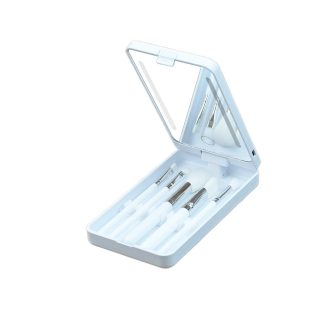

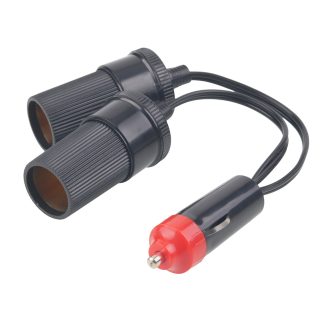
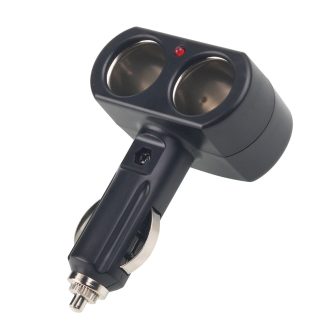
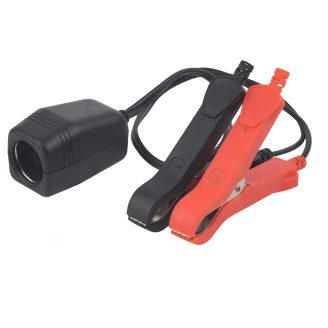
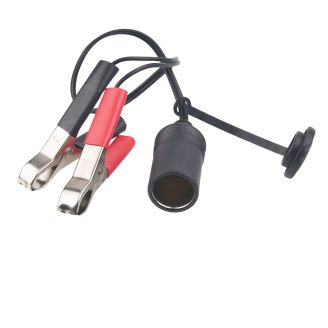
9sbvzz